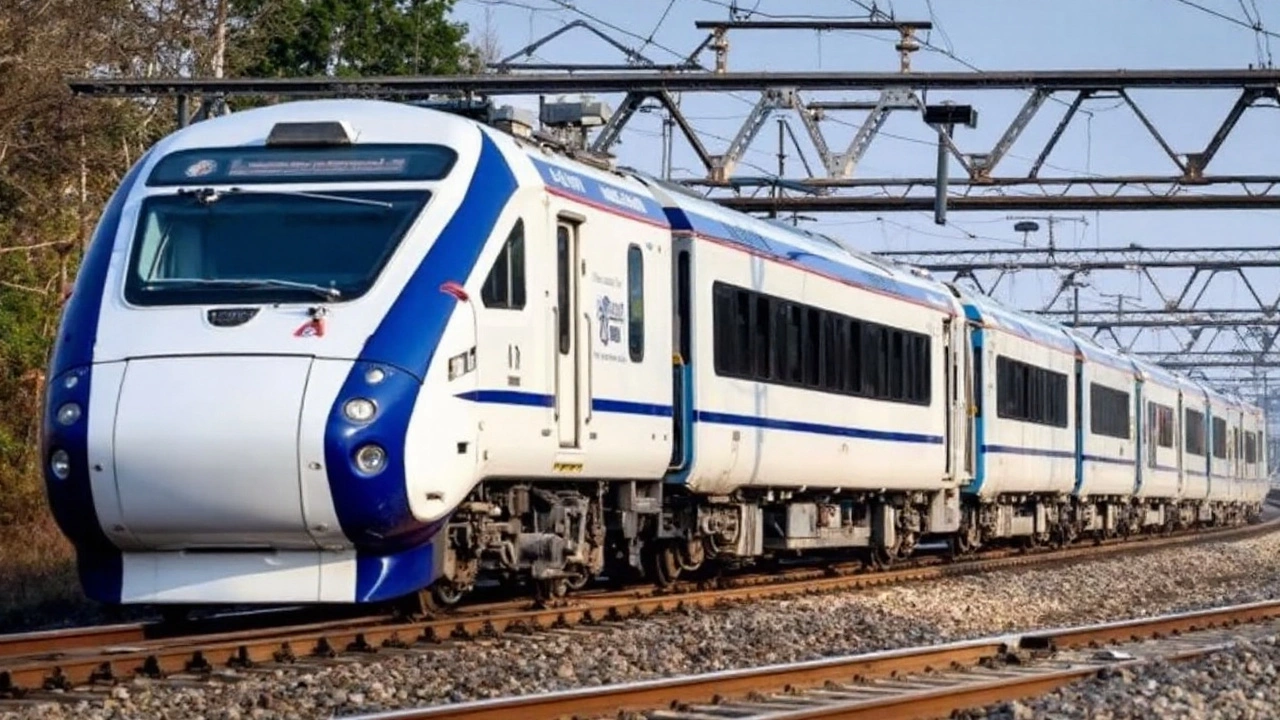Why a train you "own" still costs rent
Indian Railways insists it owns the Vande Bharat fleet. So why do the books still show hefty annual payouts that look suspiciously like rent? The short answer: financing. Building modern, premium trainsets demands huge upfront cash. Railways rarely has that lying around. So it taps the Indian Railway Finance Corporation (IRFC), which borrows from the market and fronts the money. Railways then pays IRFC back over years as lease or annuity-style charges. That’s the “rent.”
Think of IRFC as the Railways’ dedicated lender. It issues bonds, raises debt at scale, and funds rolling stock and big-ticket upgrades. Instead of Railways paying the full cost on day one, it spreads the burden across the working life of the train. The cash flow looks like rent, but it’s really debt service—principal plus interest—tied to assets that Railways operates, controls, and, in practical terms, owns for their intended life.
This model isn’t unique to Vande Bharat. It’s how a large chunk of the national network pays for locomotives, coaches, and wagons. The confusion comes from language. People hear “IRFC lease” and assume Railways doesn’t own the trains. In reality, the trains are financed through IRFC and deployed by Railways; accounting treatment can vary by contract, but operational control and long-term use rest with Railways.

What the Vande Bharat rollout really looks like
The first Vande Bharat entered service on February 15, 2019, under the Make in India push. Production has been anchored at the Integral Coach Factory (ICF) in Chennai, with additional work distributed across Indian suppliers. By the government’s own yardstick, the program marks a step up from traditional loco-hauled rakes to Electric Multiple Units (EMUs) designed for faster acceleration, better energy use, and quicker turnarounds.
As of September 2025, 73 Vande Bharat trains are in service. The fleet mix includes eight, sixteen, and twenty-coach formations. On test tracks, these trainsets have touched 183 km/h. In daily service, they operate up to 160 km/h. The bigger story is acceleration: trials clocked 0–100 km/h in 52 seconds, which trims minutes off every segment between stations and adds up over a full journey.
Those performance gains come from the EMU architecture—motors distributed under the coaches rather than a single locomotive pulling the whole consist. You get faster starts, stronger braking, and steadier speed on gradients. Add in regenerative braking, lighter interiors, and modern controls, and it’s a different ride profile than the classic express train many of us grew up with.
Manufacturing has scaled in waves. In January 2021, Hyderabad-based Medha Servo Drives won a ₹22.11 billion contract for 44 second-generation sets. In March 2022, another ₹18.5 billion worth of orders went to a spread of companies—Medha Servo Drives, Alstom, Siemens, Bharat Heavy Electricals Limited (BHEL), Titagarh Wagons, Saini Electricals, and CGL—for 58 more sets. The idea was simple: diversify the supplier base, de-risk timelines, and build capability across the ecosystem.
Then geopolitics intruded. The Russia–Ukraine war disrupted wheel imports, a critical part for high-speed-capable coaches. Railways pivoted to domestic options, roping in Steel Authority of India (SAIL) and Rashtriya Ispat Nigam (RINL) while nudging Indian plants to ramp up production. It wasn’t instant, but it reduced exposure to overseas shocks and kept assembly lines moving.
So where do the annual payments come in? When IRFC funds a batch of trainsets, those assets are tied to long-term repayment schedules. Railways pays recurring charges—labelled as lease, hire, or annuity payments—throughout the agreed term. That money services IRFC’s own borrowing costs and repays the principal. On paper, it can look like Railways is renting trains it already owns. In practice, this is standard project finance: move the capex off day one, spread it over years, and keep modern trains rolling without blowing a hole in the annual budget.
There’s also a clarity point most people miss: “ownership” has layers. Legal title and accounting treatment can sit with IRFC during the lease, while economic ownership—control, operation, maintenance responsibility, and the right to use the asset over its life—sits with Railways. Depending on the contract, the trains may be capitalized on Railways’ books or remain with IRFC until the lease ends. None of this changes what passengers see: the trains run under Indian Railways, with Indian crews, on Indian tracks.
What do passengers get for all that finance talk? Shorter journey times on busy corridors, better punctuality, and quicker turnarounds at terminals. The acceleration edge helps even when top speeds are capped by track geometry, signalling, and traffic. Many routes aren’t ready for 160 km/h end-to-end. But faster exits from stations and higher average speeds between slow zones still shave time off the clock.
There’s a supply-chain story here too. The wheel disruption forced India to deepen local manufacturing. That’s not just about pride. Domestic wheels cut lead times, lower forex exposure, and make maintenance planning less of a guessing game. When you’re running dozens of premium sets across the map, predictable parts supply is a service quality issue, not just an industrial policy win.
Where does the money go inside those “rent-like” payments? Broadly into three buckets:
- Debt service: Interest due on IRFC’s market borrowings.
- Principal repayment: The original cost spread over the lease term.
- Compliance and overheads: Costs tied to financing, insurance, and statutory requirements.
Separate from that, Railways bears routine operating costs—energy, staff, cleaning, and maintenance. On newer contracts, manufacturers may also be on the hook for long-term upkeep under service agreements, but the financing charge itself is about paying for the trains, not running them.
The numbers behind the fleet help explain the scale. Around 500 coaches have been built under Make in India so far, feeding into the 73 trains now running. The mix of eight, sixteen, and twenty-coach trainsets lets Railways match capacity to demand: shorter sets for mid-density routes, longer consists for trunk corridors that need more seats per path.
The catch? Hardware alone won’t deliver the full promise. To unlock faster end-to-end times, routes need better track geometry, upgraded signalling, fewer level crossings, and corridor fencing where required. Each of those investments has its own queue and funding cycle. Until then, Vande Bharat’s acceleration is doing a lot of the heavy lifting on punctuality and dwell time.
If you’re wondering how this affects your ticket, here’s the simple version: premium trains cost more to build, and the financing is paid down over years. As the fleet grows, the annual envelope of lease-like payments grows too. But the alternative—waiting to save up full cash for every batch—would stall expansion and keep older, slower stock in circulation longer.
Strip away the jargon and the picture is straightforward. Indian Railways runs and controls the fleet that carries its name. IRFC’s role is to make the money side work at national scale. The public calls it rent because the payments recur. The accountants call it a finance lease because that’s how big assets get funded. Either way, the outcome is visible every morning when a blue-and-white set slides out of the platform and gets to 100 km/h in under a minute.
For all the noise around labels, the core facts stand: the trains are built in India, the program is scaling through multiple suppliers, and the financing pipeline—routed through IRFC—keeps the orders flowing. The next steps are about reliability and reach: steady parts supply, smooth maintenance, and more routes ready to handle 160 km/h running. That’s what turns an impressive demo into an everyday network upgrade.
And that “rent”? It’s the price of spreading a big bill over the life of an asset. The payoff is fleet renewal without a budget shock, and a faster, cleaner service that meets today’s demand.
That’s why Railways both “owns” the trains and pays for them every year. The two ideas aren’t opposites—they’re how modern public transport gets funded.
For anyone still keeping score, the headline performance figures haven’t changed: trial speed at 183 km/h, operational ceiling at 160 km/h, and that standout 0–100 in 52 seconds. Those numbers aren’t marketing fluff; they’re why these sets matter on crowded, stop-start routes. They claw back minutes, day after day, until the timetable looks like it belongs in this decade.
If you only remember one thing, make it this: Vande Bharat trains look like a rent-versus-ownership puzzle from the outside, but inside the system it’s a plain financing tool that trades upfront pain for steady, long-term payments—so the trains keep coming, and the service keeps getting faster.
